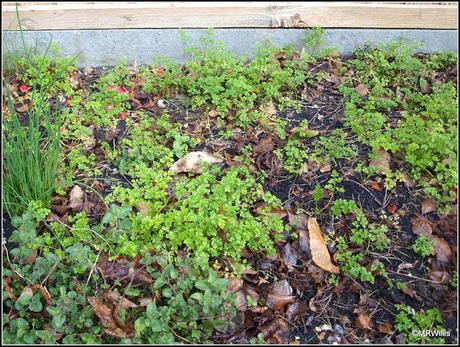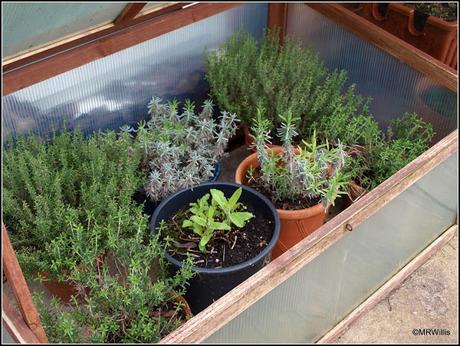
Without protection, potted herbs are quite likely to die, because their roots can get frosted. Plants growing in the soil are (perhaps surprisingly) less susceptible to this.
This Winter Savory plant has been in a coldframe, and you can see plenty of light green new growth on it. Definitely a survivor!
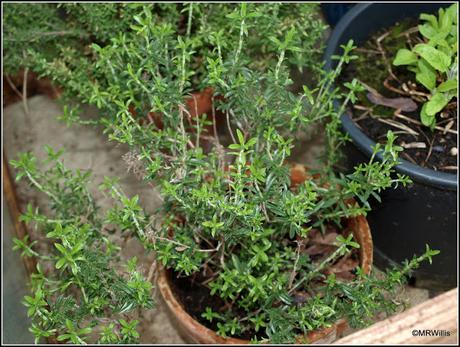
Winter Savory
This Thyme plant has been in the same coldframe, and although its new growth is not so obvious, it's definitely there. It's beginning to look green, whereas all through the Winter it has been gray.
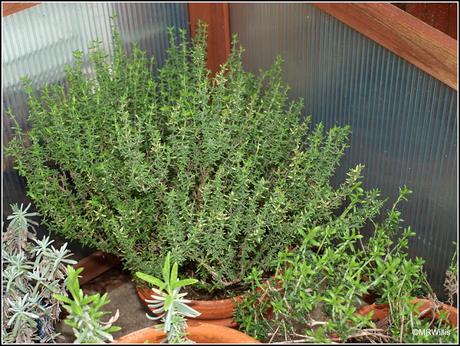
Thyme
Despite having spent the Winter outside, there's no mistaking the vigour of this Greek Oregano plant either:
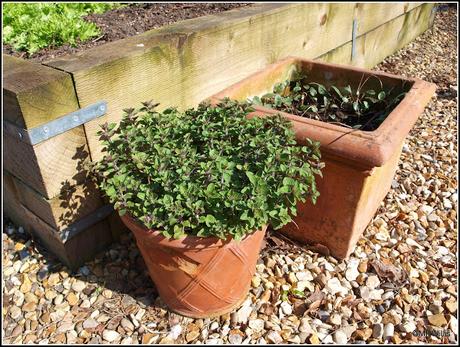
Greek Oregano
My Mint gets different treatment. Left out in the open, it dies down completely, with just a few brown woody stalks visible. Then, when it starts to reappear (usually about the middle of March) I repot it. I cut a few vigorous-looking chunks of root and pot them up, two to a 12-inch pot, in fresh compost, and discard the majority of the previous year's matted tangle of roots. With plenty of space and fresh compost, the new plants grow very rapidly. I think these will be ready for cropping in about ten days or a fortnight.
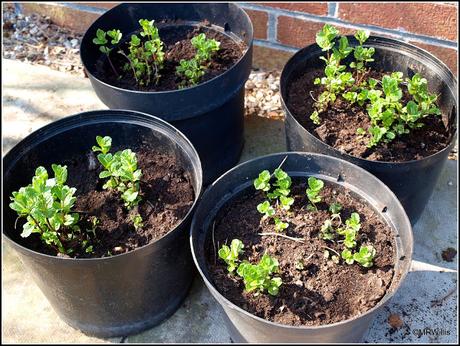
Re-potted Mint
Sage is a herb that we use a lot in our cooking (especially these days in our Italian-style dishes), and it is sometimes hard to ensure we have enough of it. Last year in the long Summer drought, I lost about half of my Sage plants, so this year I am going to try to re-stock. In the past I have had mixed success with rooting cuttings in pots of compost. Many of them didn't "take" - either shrivelling up or going mouldy before becoming established. This time I'm going to root some in a glass of water and only pot them up when I can see they have viable roots and I think they are almost certain to grow.
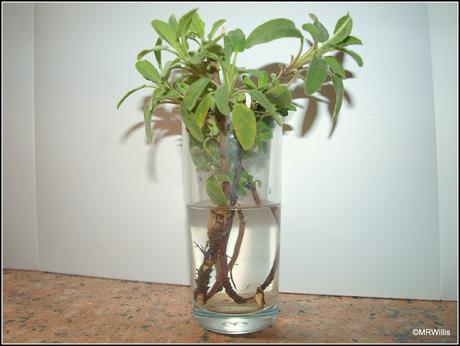
The herb used most often in our kitchen is probably Parsley. During 2017 I started what I hope will be an "everlasting" bed of Parsley. I broadcast-sowed a huge number of seeds, a good proportion of which matured into decent plants. At the end of the season I let several of them flower and subsequently scattered the seeds they produced, in the same place, last year. In normal circumstances Parsley is a biennial - it grows and crops in its first year, and flowers in its second, so hopefully I will have 1st- and 2nd-year plants in the same bed simultaneously. This is a technique I have copied from my Aunt and Uncle (who once owned and ran a nursery). I saw it working very successfully in their garden, so hopefully it will work for me too. This is it, now. It doesn't look very impressive at present, but hopefully once last year's seeds begin germinating, it will.
